Image Credit: Energy Vanguard
Image Credit: Energy Vanguard The nameplate on the outdoor unit of an air conditioner. "M/N" does not mean "M divided by N"; it means "model number." If you know the model number of an air conditioner, you can determine its nominal size.
Image Credit: Energy Vanguard Manufacturer's data from AHRI testing in Lennox's 13HPX Product Specifications document (ehb_13hpx_1407).
Image Credit: Lennox Preston's Guide allows you to look up capacity and efficiency data for older air conditioners, heat pumps, furnaces, and boilers.
Image Credit: Preston's Guide
Do you know what size your air conditioner is? In the world of building science, you’ll hear a lot of talk about why oversized air conditioners are a bad idea. Why? Briefly, they don’t dehumidify as well, short-cycling wears them out quicker, and your home will probably be less comfortable if the air conditioner is too big. But to know if your AC is oversized, first you have to know what size it is.
First, let me clarify. I’m not talking about finding the size of air conditioner you need. You do that with a heating and cooling load calculation. What I’m talking about is how to find the size of an air conditioner when you’re standing in front of it. Today, I’ll tell you four ways you can do that.
1. Determine the nominal size from the model number
The good news is that most HVAC manufacturers make it easy to determine the nominal capacity of your air conditioner. It’s in the model number. Go outside and find the outdoor unit, that metal noisemaker hidden away on the side or the back of the house. It’ll look something like the one you see above, although maybe not quite so decrepit. Then find the label that gives the data about your AC. It’ll look like the first image below.
Up near the top of the label, you see the model number (M/N) and serial number (S/N). The model number is where you can find the number you’re looking for. Not all manufacturers do this, but most will give you a 2- or 3-digit section that tells you how many thousands of BTU/hour your air conditioner can move out of your home.
The first section in the model number gives you info about the type and efficiency of the unit you’re looking at. In the case of this Lennox model (which, by the way, is not from the outdoor unit shown at the top of this article), the 13HPX tells you it’s a heat pump with an efficiency rating of 13 SEER. (That’s a nominal rating, too, which is a subject for a different article.) The X here indicates the refrigerant, R-410A in this case.
The digits you need
Just past that string of 5 characters, though, is the part that tells you the nominal size: 048. That means the air conditioner—or heat pump in cooling mode in this case—has a nominal capacity of 48,000 BTU/hour. I say nominal because the actual capacity is almost certainly going to be different.
The numbers you’ll see on residential air conditioners and heat pumps are:
| M/N | Tons |
| 018 | 1.5 |
| 024 | 2 |
| 030 | 2.5 |
| 036 | 3 |
| 042 | 3.5 |
| 048 | 4 |
| 060 | 5 |
The 3 digits in the model number tell you the nominal capacity in thousands of BTU/hr. Since each 12,000 BTU/hr is equivalent to 1 ton of air conditioner capacity, it’s easy to figure out how many tons of nominal capacity your AC has.
Pretty simple, eh?
2. Using the manufacturer’s data
The second and third methods are basically the same, but the source of the info is different. In the first method, you find the nominal size by looking at the model number of the outdoor unit. By gathering a little more information, you might be able to find the actual capacity of your air conditioner. What you need is the model number of the indoor coil, which is the evaporator coil for an air conditioner or heat pump in cooling mode.
If you’ve got a typical central air conditioner, it’s a split system. That means it’s got two major components: the outdoor unit, where the compressor is, and the indoor unit, which has a blower and the evaporator coil. If the indoor unit is connected to a furnace, you want the model number off of the box with the coil in it. Just look for the part that has two copper pipes (the refrigerant lines or lineset) entering and a plastic pipe (the condensate line) leaving.
When you have both the indoor and outdoor model numbers, you might be able to find the data for your air conditioner on the manufacturer’s website. The easiest way to find it there, though, is usually to let Google do the work for you.
For example, using the outdoor model number in Image #2 below, I typed “Lennox 13HPX-048 data” into the Google search bar and found what I needed. It was the ninth link on the first page, and I had to navigate in a few pages from where it dropped me, but I found what I needed in their Product Specifications document for the 13HPX.
That document has a lot of good data in it, but the part I was looking for was in the table that began on page 10: AHRI System Matches. (AHRI is the Air Conditioning, Heating, and Refrigeration Institute.) It started with the low-capacity units (1.5 ton) and on page 20 finally got to the 4-ton units I was looking for. I’ve included a screenshot of a small part of the table below (Image #3) so you can see the data.
Notice that the actual cooling capacity depends greatly on which indoor unit gets paired with the outdoor unit. It varies from a low of 46,500 BTU/h all the way up to 59,500 BTU/h. The latter number is the capacity of a 5-ton unit, so let this be a lesson to you in not putting absolute faith in nominal capacities.
In fact, the cooling capacities shown in the table aren’t the only thing that affect the actual capacity. I wrote last year about some of the other factors that change an air conditioner’s cooling capacity. Basically, the difference arises because AHRI test conditions aren’t the same as design conditions. You can read the article to get the details on that.
3. Using the AHRI Directory
This method usually gets you the same data you can get from the manufacturer because manufacturers test their equipment to AHRI standards. AHRI just makes you work a little harder to get the info sometimes. If you’ve ever used the AHRI Directory, you know how finicky it is.
As with getting the data from the manufacturer, with AHRI you look up the matching outdoor and indoor model numbers. You won’t always find the system you’re looking for in the AHRI directory, however. Sometimes it’s in there and hard to find. Other times it’s just not there. The latter could be because the model is too old or has been discontinued. It could also be that the two coils don’t match and haven’t gone through AHRI testing.
Here’s a tip for you to make working with the AHRI Directory easier: Enter minimal information to start and gradually add more. For example, when I went there and entered 13HPX for the outdoor model number and Lennox as the manufacturer of the outdoor unit, I got no results. Nothing. So I removed the manufacturer and just searched on 13HPX.
That gave me 1608 results. To narrow that down, I went back and added the size. Searching on 13HPX-048 gave me 260 results. Then I added most of the indoor model number, CBX25UH, and got it down to a manageable 6 results. The key is to be a minimalist! If you try to throw everything you’ve got at the AHRI Directory, it freaks out.
4. Using Preston’s Guide
If you have a really old air conditioner (10 years or more), you’re not going to find it in the AHRI Directory. You probably won’t find it on the manufacturer’s website either. If you can still read the model number on the outdoor unit, you can look it up in another directory called Preston’s Guide. I’ve got a paper copy that covers the years 1960 to 2000. The current edition goes up to 2005. In addition to the old style book, you can also get it in CD-ROM form or buy an annual subscription to their online database.
You need to know three things to look up an air conditioner in Preston’s Guide: the manufacturer, the outdoor unit model number, and the type of system. The last piece of info is needed because they cover several types and configurations of systems, from split-system heat pumps to single-package air conditioners. Once you have that info, you can look it up in the guide and find out the capacity in BTU/h and efficiency in EER or SEER. The book also shows the years that model was made, so you may need that bit of info, too, to home in on your system.
When you’re looking up numbers in Preston’s Guide, you’re not going to get actual capacities because it doesn’t show data for different combinations of outdoor and indoor units. And keep in mind that while it does give the appearance of being more accurate than using the nominal size from the model number, it’s probably not since you haven’t looked up a particular coil combination.
If all else fails, just replace it
Now that you have all these tools at your disposal, you should be able to find the size of just about any air conditioner you happen to run into. I say “just about” because occasionally you’ll find one with a dirty nameplate and when you wipe it off to read it, there goes all the remaining print, too. If it’s that old, though, just go ahead and replace it.
Allison Bailes of Decatur, Georgia, is a speaker, writer, energy consultant, RESNET-certified trainer, and the author of the Energy Vanguard Blog. Check out his in-depth course, Mastering Building Science at Heatspring Learning Institute, and follow him on Twitter at @EnergyVanguard.
Weekly Newsletter
Get building science and energy efficiency advice, plus special offers, in your inbox.

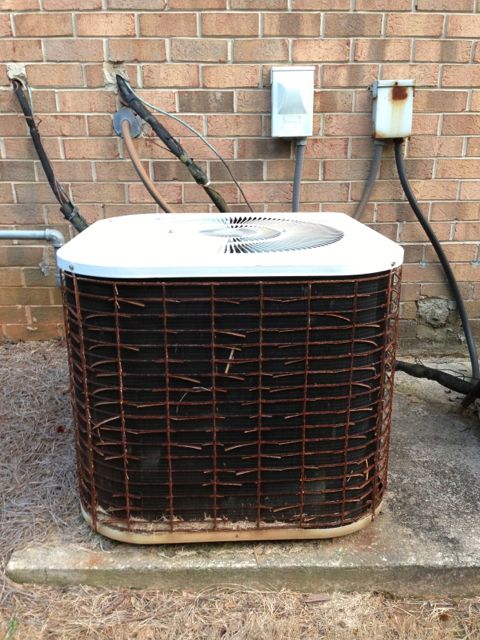




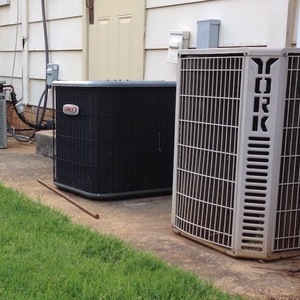
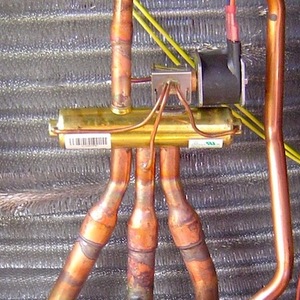
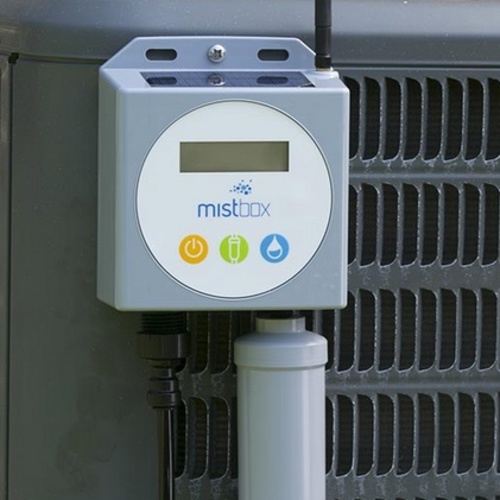
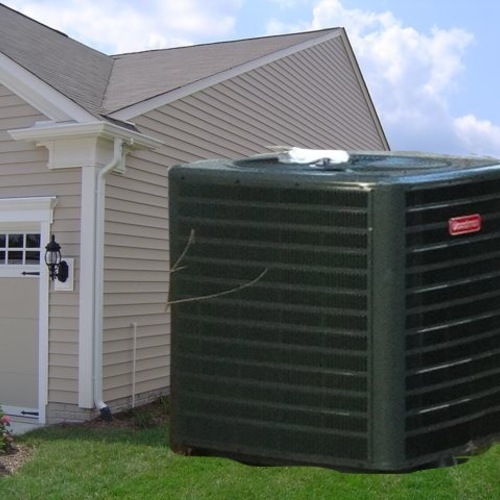






5 Comments
Sizing an air conditioner: a question
Allison,
Thanks for the info on determining the size of an existing a/c unit. My question deals with the sizing analysis.
I'm not in the market for a new a/c at the moment but I think I can anticipate a problem on the horizon.
The problem is the way the sizing seems to be done and meanwhile the energy efficiency projects we've installed at our home.
The sizing seems to depend on the building area (ft2) to be served and the geographic region. This tells me there are certain assumptions being made about climate, insulation, heat gain, and the like. In the Chicago area, our Utility tells us we are now using less energy than average and less than the best 20% of homes. Specifically, compared to 100 homes of like size (4400 ft2) in our area we are using 52% of the electricity in summers compared to the 20% best performers in that group of 100. So, if sizing is dictated by the average, we would install a much larger unit than our actual load would dictate. (Ten years ago we were using twice as much electricity as now.)
We have a 2-story house with an identical a/c unit for each level. We've used insulation and sealing and cool roof but the most impactful project for summer electricity usage has been the use of solar grates on windows for the south, west, and east sides (plus skylights). The grates are seasonal and are install -and-forget. The lower level a/c unit only runs when I put it on manual because the upper level cools enough to handle the whole house and, naturally, it is always the first one to operate as hot air rises. The grates significantly reduce the solar load so the interior temperature rises only gently during the day and the a/c usually runs only at night when the electricity is cheaper to regain our overnight set point of 76F. With this experience, it seems like when it's time to change the a/c hardware, we should install an upper unit of size similar to the existing and to install a smaller unit for the lower level (if any). The upper level unit probably justifies a premium for efficiency since it carries the load. Of course, if the house is sold, the new owner would be stuck with whatever we've installed and there's no guarantee they'd have the same interest in efficiency as we do. The insulation is permanent but the grates are discretionary.
Any ideas about how to size a/c unit(s) in this scenario? If I were doing it, I think I'd look at 'base load' electricity usage in months requiring neither heating nor cooling and assume this is roughly duplicated month by month. Then, deduct this amount from the a/c months leaving the difference as the electricity for the a/c. Then see what this says about a/c sizing. This would be sizing based on actual kwh used for a particular a/c unit instead of ft2 of the house. Actually, the method has merit because it includes effects of both temperature and humidity as the a/c would view it.
Response to W.D.
W.D.,
Q. "The sizing seems to depend on the building area (ft2) to be served and the geographic region. ... Any ideas about how to size the AC unit(s) in this scenario?"
A. First of all, sizing by house area and geographic region is not recommended by any HVAC expert. Moreover, such a sloppy method is not permitted by code. Building codes require HVAC equipment to be sized by the Manual J method, or a method that is comparable in sophistication.
Here are links to two articles on these issues:
Saving Energy With Manual J and Manual D
Calculating Cooling Loads
Of course, just because building codes require that cooling loads be calculated by the Manual J method, doesn't mean that HVAC contractors follow code requirements. They usually don't -- so you should hire an energy consultant or a home energy rater to perform the necessary calculations.
My introduction to the swamp
Thanks, Martin, for the references on HVAC sizing. I appreciate it. I'm smiling now because I feel like I've been introduced to the swamp by being deposited in the middle and invited to swim with all the unknowns around me. I read the two helpful links and lost count of the several caveats.
In addition, I have these thoughts/observations:
1) Using the rule "You know that your air conditioner is sized correctly if it runs for 100% of the time on the hottest afternoon of the year ... ", I guess my a/c is oversized. It doesn't seem oversized because when it runs it stays running for several minutes (maybe 10?). It does a good job of trimming the humidity and it never struggles to keep up or cool throughout. Still, we've made enough energy efficiency improvements that our a/c almost never runs during the day in summer, even on the hottest day. Following our programmable thermostat, the temperature gently rises to as high as 80F on the hottest days. Overnight the a/c runs several times and brings the house to an overnight setting of 76F in the summer. If I'm asked if I think the a/c is oversized, I'd say yes. If you ask me how much, I'll deny all knowledge because I've been shown the swamp.
2) It occurs to me that if I had a perfectly sized a/c unit and later did energy efficiency projects, I could possibly create new conditions that put my perfect a/c unit into the over-sized category.
3) When it comes time to replace our a/c unit(s), I feel a little better having the experience of seeing how the current one operates. There's certainly no reason to buy a new unit with higher capacity. If you ask me how much smaller it could be, I'll deny all knowledge because .....
4) Having been introduced to the MJ calculation method, I think I'd view it as one tool in arriving at a/c sizing. If I were a contractor I think I'd also compare to other homes in the area of comparable energy usage and see how those units perform. Then, triangulate. I also appreciate the zoning requirements but if anyone asks me to explain them, I'll deny all knowledge because I've been shown the swamp.
My regards and kind appreciation of your helpful response.
if you want to calculate the size, simply multiply the length times the width of the room or area to be cooled. Then, as a practical number, multiply that total times 25 BTU. This allows ample cooling, whether it is a rainy, moist day or a hot, sunny, humid day.
BTU per square foot rules of thumb like that usually end up with oversize factors somewhere between "ludicrous" and "ridiculous".
The 25 BTU per square foot rule of thumb is a bit more than a ton per 500', whereas the average whole-house cooling loads tend to be north of a ton per 1000', often north of a ton per 1500'. While individual room loads in a house averaging a ton per 1500' might need as much as the rule of thumb, those would be the extreme outliers. Almost no house in the US has a cooling load of a ton per 500'.
Check out the graphic plotting square feet per ton ratios against house size on dozens of Manual J's performed by Allison Bailes' company:
https://www.greenbuildingadvisor.com/article/manual-j-load-calculations-vs-rules-of-thumb
https://beta.greenbuildingadvisor.com/app/uploads/sites/default/files/images/Bailes_graph_for_Manual_J_blog.preview.png
Even the worst performing home was about a ton per 600' (20 BTU/hr per square foot of conditioned space, not 25). The majority of the homes would be fine with just 10 BTU/hr per square foot.
So from a practical point of view, 25 BTU/hr per square foot is a pretty lousy rule of thumb, since at 2x+ oversizing the duty cycling can negatively impact both efficiency and comfort.
Log in or create an account to post a comment.
Sign up Log in